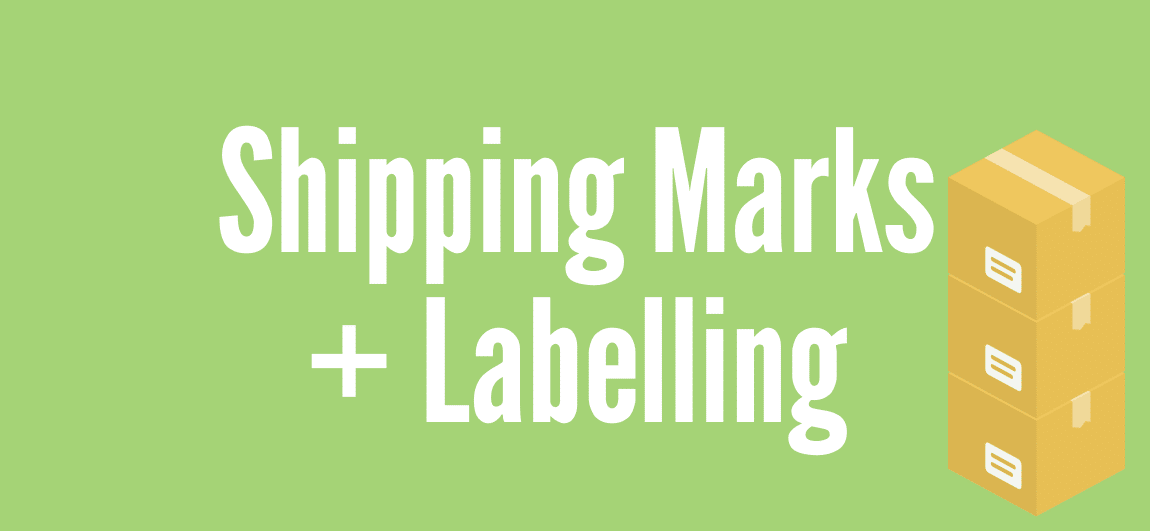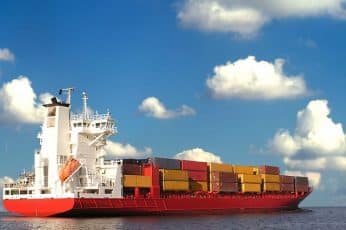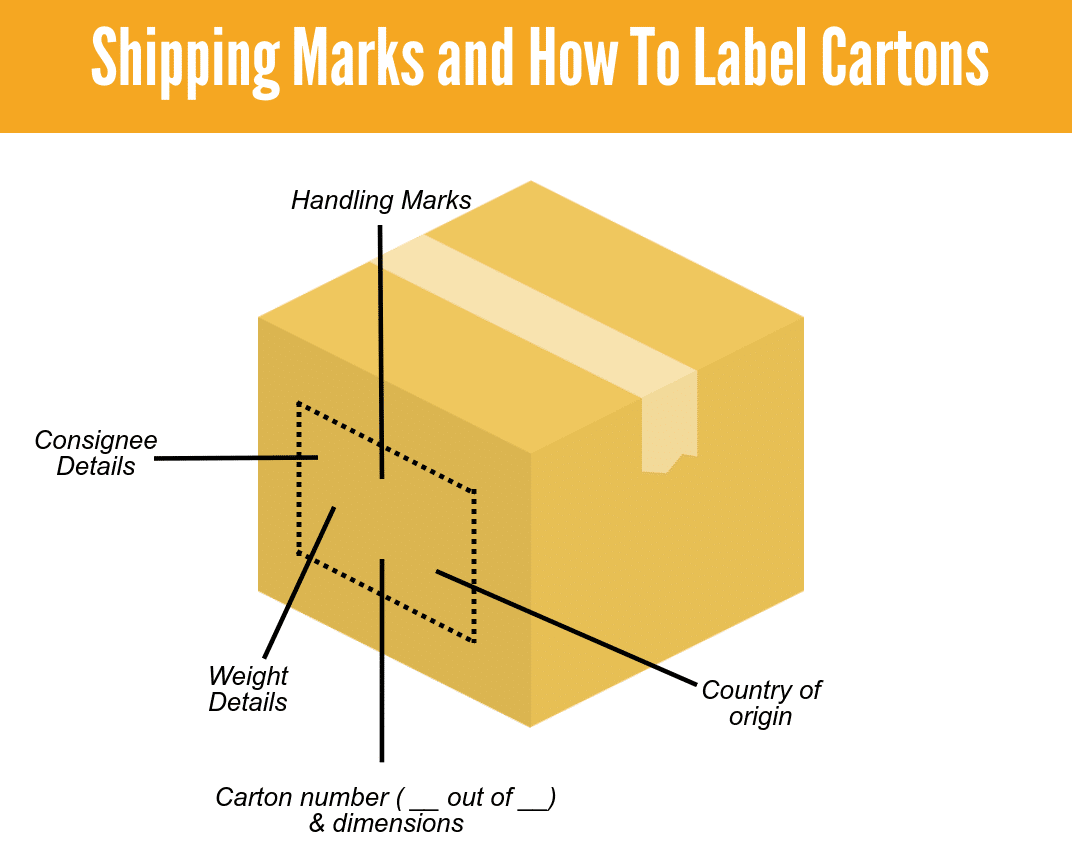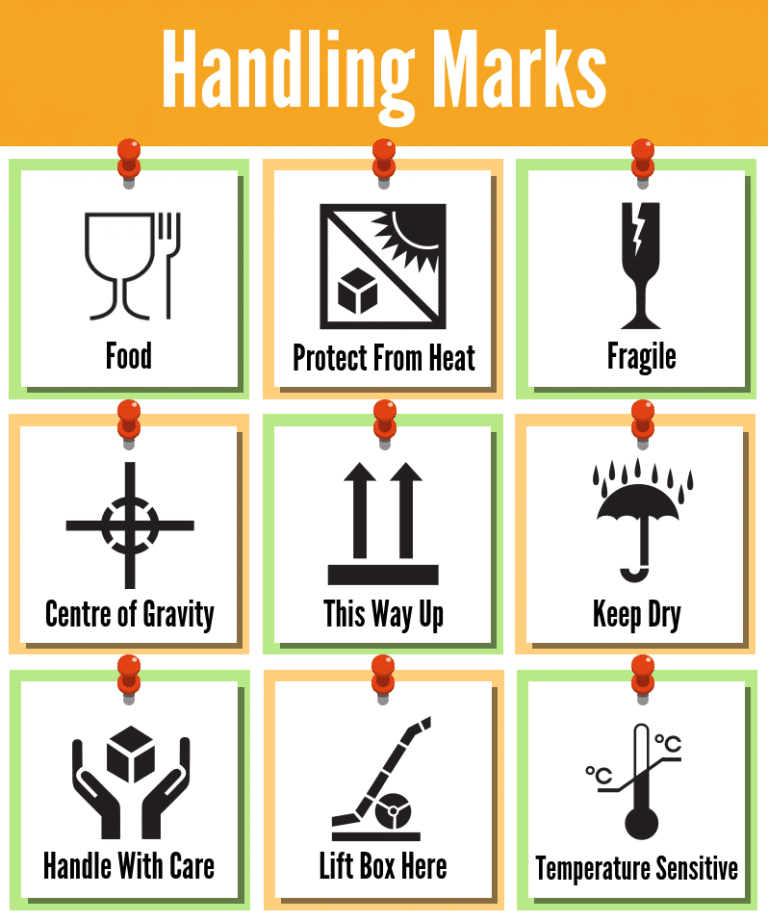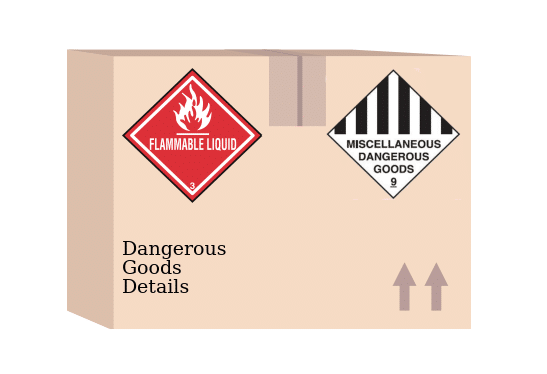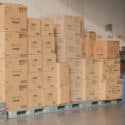This content was reviewed for accuracy on 25/08/2023
When shipping, your cartons need to be clearly labelled. Shipping marks are directions for the people handling your goods. Before the staff dealing with your products touch a box, they should know about the goods inside. How heavy it’s going to be, is it fragile or do the contents need to stay a certain way up.
Remember, your products are in boxes – so people won’t immediately know what they are and what precautions need to be taken when transporting them. Handlers need to be able to identify the type of product they’re handling and what sort of provisions need to be made for safety and efficiency.
Not only for handling purposes but carton marks and labels are also used for identification and to keep consignments together. If your goods don’t fill a container then they need to be easily identifiable. That’s why carton marks in LCL shipping are so important.
-
Shipping Marks In LCL Shipments
Shipping marks are the details that your supplier prints on the cartons, they may include your company name, their company name, the goods, colour, weight and dimensions. Some companies add more details than others so if you need further details to differentiate your products prior to opening the cartons it’s important to let your supplier know.
When you’re shipping via less than container load (LCL), your goods will be packaged into a shared container. Although this is an efficient way of shipping that can save you a lot of money, the fact that there are so many people’s products in one shared container can lead to confusion (if your supplier hasn’t clearly packaged and labelled your goods).
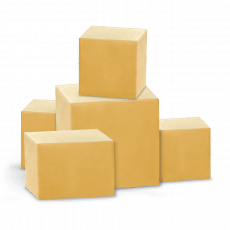
When importing goods from China most goods aren’t palletised in transit meaning your goods will be packed as loose cartons. Imagine if 10 companies in a shared container had 50 loose cartons – now, on top of that, remember that all cartons typically look fairly similar. You can see where this gets confusing, can’t you?
There’s no need to worry, though; so long as your goods are labelled correctly with the right shipping marks, it’s easy to separate them when the container is unpacked. Today’s post is all about what those shipping marks are and how to make sure that your supplier has used them.
-
How Shipping Marks Benefit You
Shipping marks are also for your benefit. They clearly mark and distinguish all of your stock, which in turn makes it easier for you to find and unpack.
For example: if you’ve got an order of 300 cartons that has 5 colour variations, your supplier can make sure that these variations are reflected in the labelling. This then cuts out a lot of wasted time and effort crawling through cartons to try to find a specific product. So let’s say you’re looking for a medium green T-Shirt; you can look at the labels to find which box contains the Green T-Shirts and in what size.
In the same sense, if you’re using a fulfilment warehouse to fulfil your orders, having your cartons labelled clearly helps the warehouse to be able to efficiently unpack and dispatch your goods.
-
How To Label Your Cartons For Transit
People use different shipping marks in their cartons, but the markings that we recommend are:
Carton number: [e.g. 1 of x, 2 of x, 3 of x, etc.]
Carton size: [dimensions in cm]
Net Weight: [in kg]
Gross Weight: [in kg]
In addition to that, it’s probably a good idea to ask for your company name to be put on the cartons. You can also request other things like the number of items inside (and type of item if you’re shipping lots of different colours or sizes) or anything else that may help you on arrival to be put on the cartons.
-
Shipping Marks And How To Label Carton Infographic
-
Handling Marks & Their Meanings
For safety and transit-related marking, you’ll want to use symbols instead of writing; these are universally recognised. When shipping goods internationally, it’s very likely that they’ll encounter people who can’t speak the language your markings are written in, so using symbols is important to convey the conditions goods need to be kept in when shipped.
Here at the symbols that are usually used in shipping and what they mean:
-
Amazon FBA Marking
If your goods are being imported straight to Amazon FBA (which we can easily do for you), there are additional labels that will need to be put on the cartons. We would strongly recommend that you have your supplier apply the Amazon carton labels to ensure there are no extra costs or complications in the UK. This is because Amazon has very strict packaging and labelling requirements for them to be accepted to the warehouse.
If you are shipping to Amazon FBA and want to know how your products need to be packaged, here’s our Guide To Amazon FBA Packaging and Labeling Requirements.
Please ensure any carton labels aren’t covering the Shipping or Handling marks or there’s no point including them!
-
Dangerous Goods Markings
If you’re shipping goods that fall under any of the 9 classes of dangerous goods, you will need to make sure that your cartons are correctly marked with their hazard symbols. This is because dangerous goods (products that are hazardous for transit) need to be handled with care. Transport conditions can cause reactions which cause these types of goods to be unstable – not necessarily products that are dangerous themselves
Products that are considered hazardous goods require controlled conditions that are specific to their class’s needs – so it is imperative that their cartons are marked so people handling them can make the necessary arrangements.
To learn more about dangerous goods – and identify whether the goods you’re shipping are classed as dangerous goods – feel free to read our 9 Classes Of Dangerous Goods Guide.
-
Get In Touch With Shippo
Hopefully, you enjoyed this post and learned more about shipping marks and why they’re such a critical part of the shipping process. If you are shipping goods internationally and would like some help (and savings!) with sea or air freight, feel free to contact us or grab a free quote.
We used Shippo to import goods from China to Amazon UK. Their service was second to none! They were fully aware of all of the intricacies of delivering to Amazon, appointment slots, labelling requirements, size specifications etc. They dealt swiftly and efficiently with getting our products on the ship in China and through UK customs. For anything we needed to do ourselves, they provided advice and guidance and kept us informed the whole way through the process. Our first shipment through Shippo has been quick, easy and very successful. We will definitely use their services again and have no hesitation in recommending them to our colleagues. Special thanks to Zac Tullet, who was totally on the ball the whole time and kept us updated throughout. Thank you Shippo!!Andy Tynan -
More Posts You May Like
Protect Yourself From Hidden Fees When Importing From China
0 commentsWe all want an all-inclusive quote when we’re offered a price right…? When it comes to importing this isn’t always the case. Shippo can make
LCL – How Will My Goods Be Delivered
0 commentsThe standard delivery offered when importing goods to the UK is kerbside. This means that the driver will park up outside your premises and it’s
FCL – How Will My Goods Be Delivered?
0 commentsAs with the standard deliveries, full container load deliveries are “kerbside” This means the container will arrive on the back of the truck and you’ll
